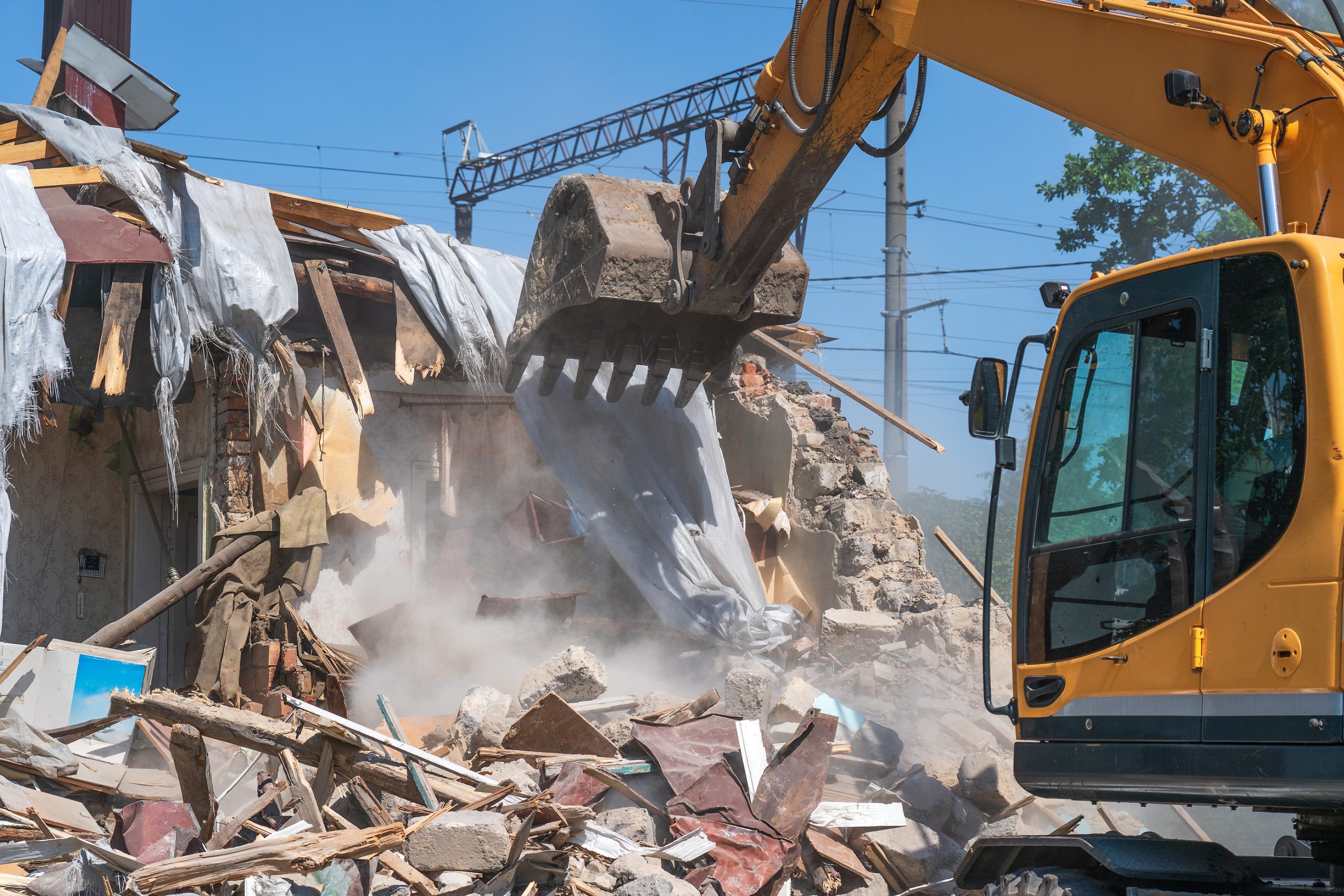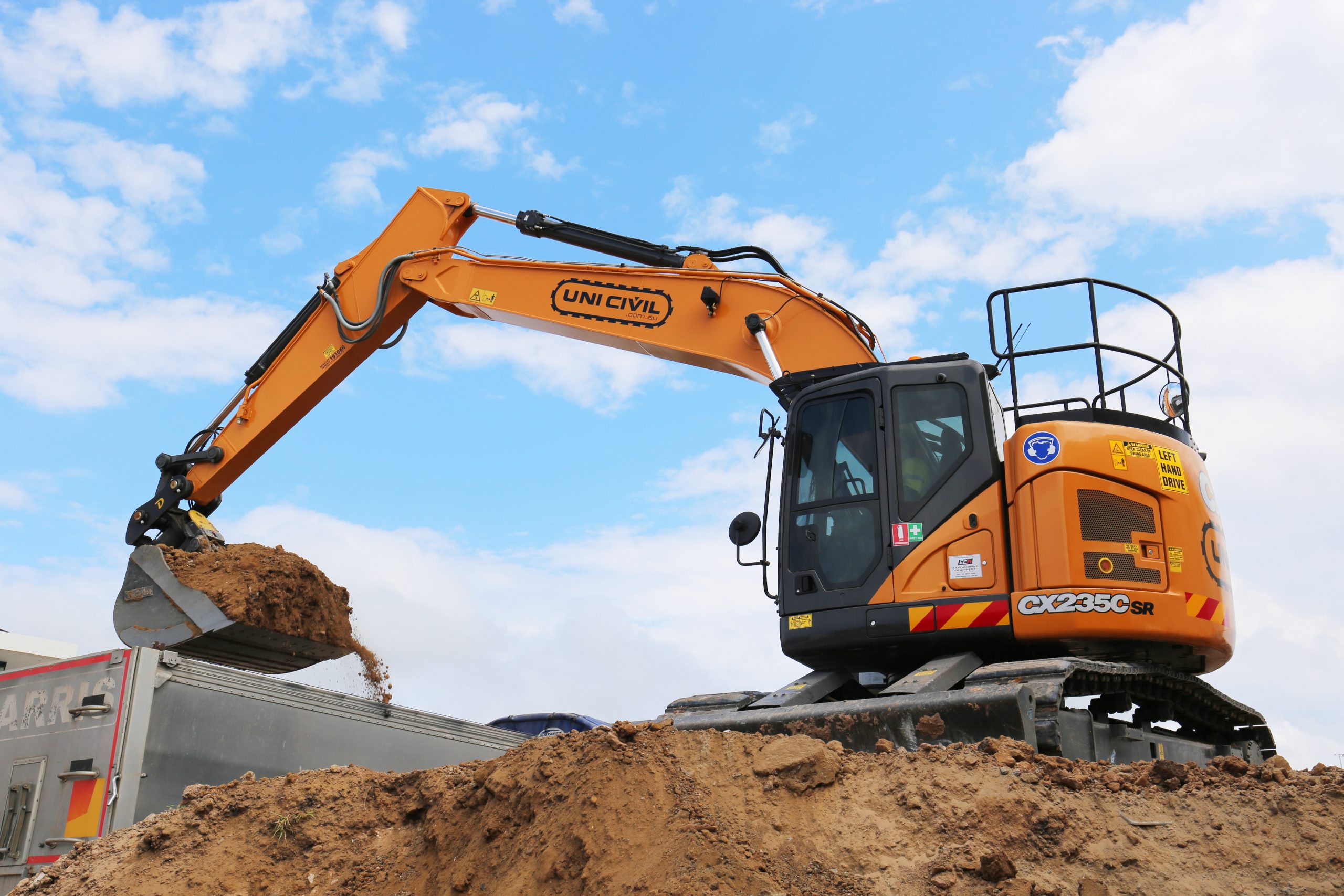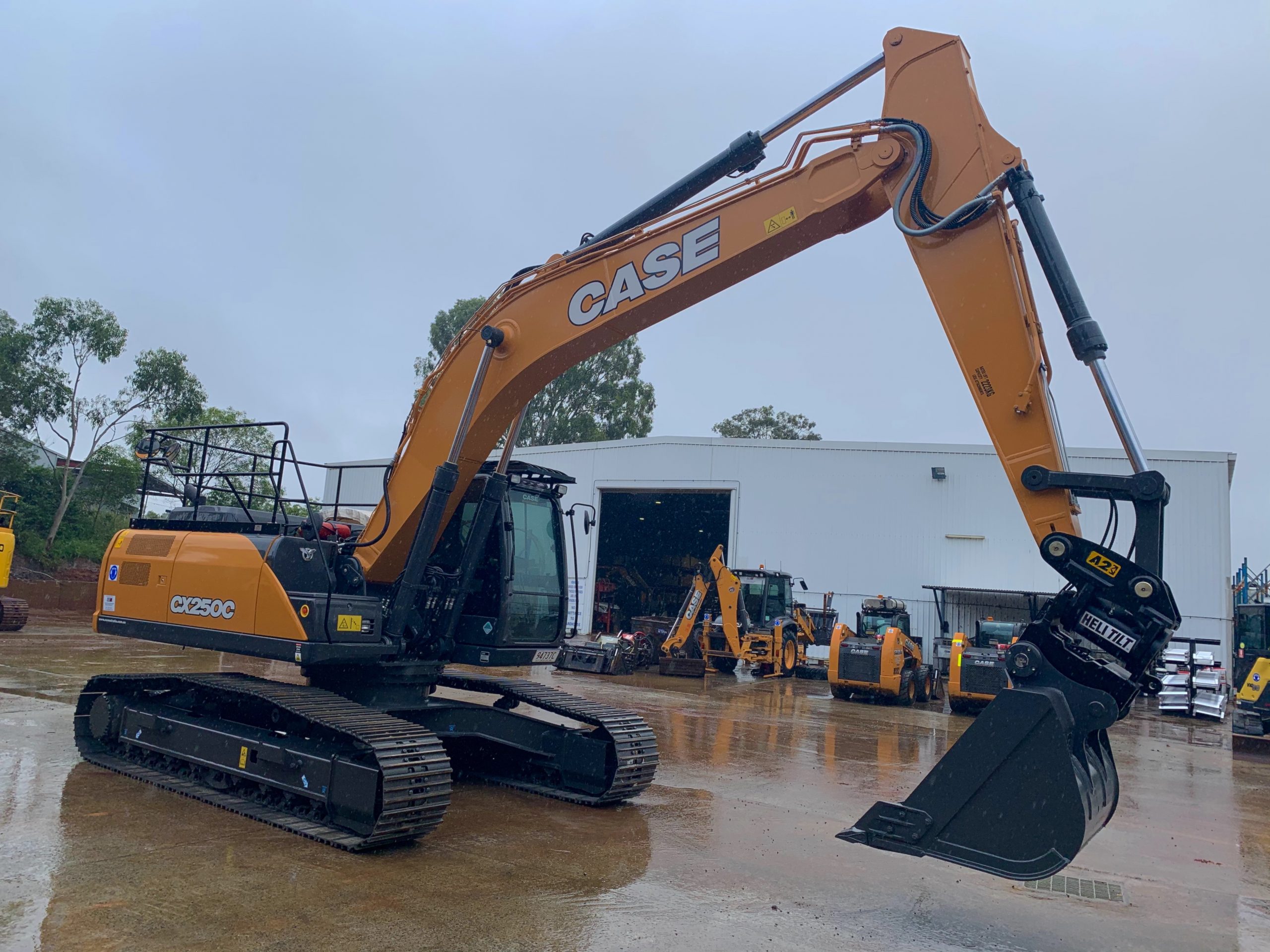You have probably heard terms like demolition and excavation used interchangeably. Many companies offer both services, which seems to add to the demolition vs excavation confusion.
In reality, these two jobs are not similar. They require different processes, expertise, and safety procedures.
Here is a closer look at the processes, attachments and equipment necessary for demolition and excavation and the differences and similarities between the two.
What Is Demolition?

Process of demolition of old building dismantling. Excavator breaking house. Destruction of dilapidated housing for new development.
Demolition involves taking down structures. The goal can be to make way for new buildings or to remove older buildings that pose a safety threat.
People unfamiliar with the demolition industry typically picture wrecking balls or buildings imploding because of explosive charges. However, demolition usually involves other techniques that require more precision and equipment with specialised mechanical or hydraulic extensions.
The goals of these projects could include preserving some materials for reuse or recycling or ensuring the surrounding area or infrastructure is not damaged by falling debris.
Demolition projects can also focus on portions of buildings or interior spaces. These jobs aim to prepare a space for renovation or remove a damaged portion of a building after a storm or fire. The demolition team needs to ensure that the building remains structurally sound overall.
What Is Excavation?

Excavation focuses on moving earth rather than taking down structures. Excavation companies can use their equipment to create holes or trenches. Though people unfamiliar with the industry may associate excavation with this type of digging, most projects require more precision.
For example, excavators may work on tunnels or the underground portions of large construction projects. These tasks require accuracy because the structural integrity depends on the earth providing the necessary support.
Excavation projects can extend to mining and road construction. There are also utility projects that involve burying pipes or cables underground and then covering them. These jobs show that excavation projects may not always involve digging up earth and moving it away.
The Different Steps for Excavation and Demolition
When it comes to excavation vs demolition comparisons, the processes are very different.
The steps for demolition are a bit more methodical than for excavation.
- Inspection. Demolition starts with an inspection of the structures. The inspector will look for chemicals, gas lines, dangerous materials like asbestos, and structural problems that could lead to a premature collapse.
- Planning. After the inspection, the demolition team will plan the best way to remove the building and materials.
- Disconnection of services. Demolition cannot start until all existing plumbing, electrical, and gas services are disconnected.
- Demolition. The company will bring the machinery to the job site and perform the demolition according to the plan. They will haul away the remains of the building either for recycling or placement in a landfill.
Depending on the type of structure and location, there could also be permit requirements from city or council authorities.
Excavation steps can vary depending on the nature of the project. However, parts of the process are the same regardless of the situation.
- Clearing and staking. The ground may need to be cleared of trees and brush, and major obstacles, like boulders, removed. This step can also include ensuring there are no gas, electric, or water lines on the site.
- Mark corners and dig the trench. This step sets the dimensions for the project and establishes the depth.
- Excavation. After all the parameters are established, the team can use machinery to carry out the excavation.
What Equipment Is Needed for Demolition and Excavation?

In the demolition vs excavation comparison, there is not much overlap when it comes to the processes and techniques. However, the equipment is very similar. In fact, excavation and demolition often use the same machinery, but they rely on different tool attachments.
For example, excavators are employed to tear down some structures and scoop up debris from the demolition site. Dozers and backhoes can also play a role in demolition, as can site dumpers, which carry away debris after it is removed from the building.
Demolition experts can use hydraulic tool attachments specifically designed to crush, cut, or break off parts of a building.
The same excavators used to knock down walls can dig and move earth either with or without a change to the tool attachments.
Why Do Companies Offer Both Demolition and Excavation?
For companies involved in the two industries, there is not really a demolition vs excavation debate. Because of the equipment overlap, it makes perfect business sense to offer both services.
The primary investment for these businesses is machinery. Once a company has acquired excavators, dozers, and backhoes, it can outfit them with different attachments. These will allow the teams to transition from excavation to demolition projects easily.
Why would they want this ability to switch? The equipment only provides a return on investment when it is on the job. Offering both excavation and demolition services increases the pool of available jobs.
If you want to invest in machinery or find attachments to allow your equipment to switch between demolition and excavation jobs, consider Earthmoving Equipment Australia. We offer a full selection of equipment and attachments, with both new and used options available. Contact us today if you are looking to start or expand your demolition and excavation company.

